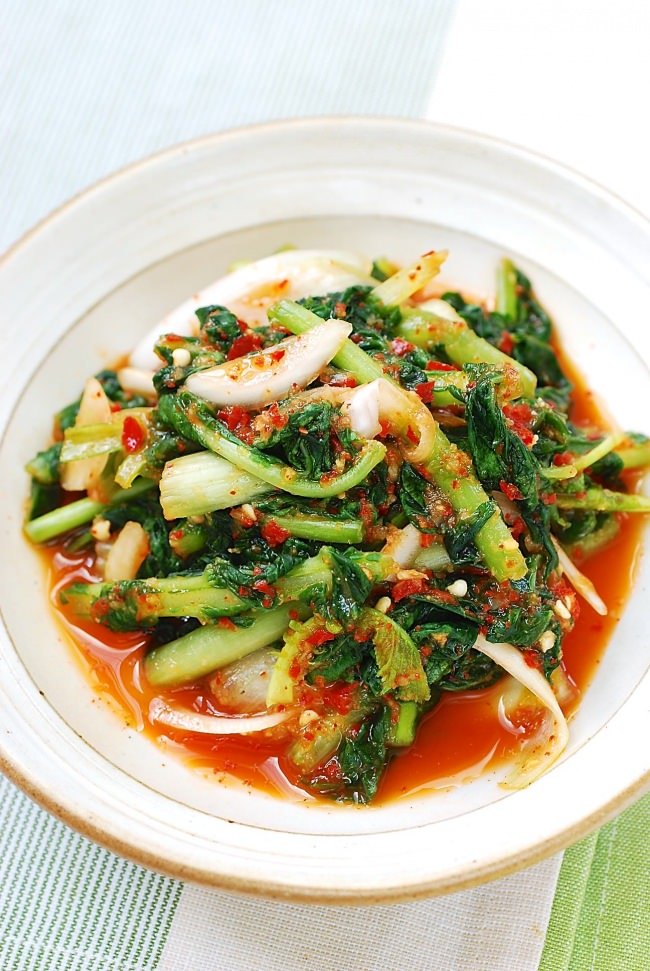Root to Stem Recipe – Radish Kimchi Recipe from Hilton Atlanta Executive Chef Christian Quinones

A “root to stem” recipe is one in which the whole plant is used. Many plants are completely edible, but sometimes we neglect lesser-used parts of the plant in our recipes. Radishes are an example of a plant that can be eaten from root to stem, but we typically eat only the bulb.
This recipe for kimchi using radish stems and leaves is from Christian Quinones, the Executive Chef at the Hilton Atlanta. The Hilton donates surplus food to SHA on an as-needed basis.
Next time you’re cooking with radishes, use the leftover stems to make this delicious kimchi!
Radish Kimchi and Porridge Ingredients:
- 1 bundle young radish and their greens, (about 1–1.2kg)
- 1 medium white onion 2–3 green chilies (serrano chilis or red Thai chilis)
- 10 cloves garlic
- 1 thumb ginger
- 1L water
- 4 tbsp coarse sea salt + a couple of handfuls for curing
- 1 small handful scallions (3–4 cm cut in length)
- For porridge: 5 tbsp of AP flour and 3 cups (600ml) water
Porridge Directions:
- Mix your flour with cold water and whisk to remove any lumps
- Bring the mixture to a boil, whisking constantly, and remove from heat when it becomes translucent.
- Cool to room temperature.
Kimchi Directions:
- Clean your radishes by trimming any stiff and fibrous stems and scraping the roots clean. Pay extra attention to the top part of the roots where a lot of soil tends to hide. If your radish is a little overgrown you may have to cut some of the roots in half.
- Rinse thoroughly once more and set them aside to drain on wire rack. Don’t use a salad spinner—it can bruise the greens, releasing a grassy flavor.
- Cut the greens into 5–6cm pieces. Put them in a bowl and sprinkle some coarse sea salt over them. The amount of salt doesn’t matter too much—the more salt you use the faster it cures, and vice-versa. Toss the leaves gently a couple of times. Be careful: If you toss them too much, you’ll bruise the leaves, bringing out too much grassiness.
- Once the greens have wilted, rinse a piece and taste it. If you taste a little saltiness, it’s ready. Rinse all the greens gently in cold water and drain them on the wicker tray again.
- While you are draining your leaves, combine the garlic, ginger and chilies together. Chop or blend until the red chilies are a coarse dice. Blend the onion separately into a purée.
- Combine the chilled porridge, water and vegetables from step 5 and season with salt.
- Cut the scallions into 5–6cm pieces.
- Put the radish greens into a container, spread the scallions on top and pour the porridge mixture evenly over it all. If there is a lot of space between the surface of the kimchi and the lid, place some plastic wrap over the top to prevent too much air exposure.
- Let it ferment for a day at room temperature. Right when you start to smell a kind of funky, fermented aroma, put your kimchi into the fridge in a tightly-sealed container. Kimchi hates air, so always keep it air-tight.